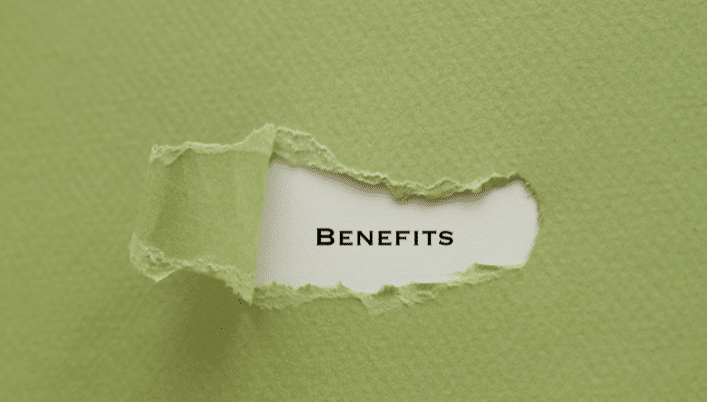Introduction

When it comes to CPF Top Up Tax Relief in Singapore, one tax relief option that individuals can take advantage of is the CPF Top Up Tax Relief.
This relief allows taxpayers to enjoy tax deductions by making voluntary cash top-ups to their CPF accounts.
By understanding this relief and how it can benefit taxpayers in 2023, individuals can effectively reduce their taxable income and potentially save on their tax bills.
Understanding the CPF Top Up Tax Relief in Singapore

The CPF Top Up Tax Relief is designed to incentivize individuals to make voluntary contributions to their CPF accounts, particularly for retirement planning purposes.
With the introduction of the CPF LIFE program, which provides a lifelong monthly payout during retirement, individuals must ensure they have sufficient funds in their CPF retirement accounts.
By making voluntary cash top-ups, individuals can enjoy tax deductions on the amount contributed, reducing their taxable income and potentially lowering their tax bills.
This tax relief is especially valuable as it provides individuals with an opportunity to save for retirement while enjoying tax benefits.
By harnessing this relief, taxpayers can maximize their CPF contributions, potentially increasing their retirement savings and taking advantage of the tax savings and reductions that come with it.
How the CPF Top Up Tax Relief can benefit taxpayers in 2023

In 2023, taxpayers can continue to benefit from the CPF Top Up Tax Relief through the CPF Cash Top-Up Relief scheme.
This scheme allows individuals to claim tax relief on cash top-ups made to their own or their loved ones’ CPF accounts.
By making these cash top-ups, taxpayers not only qualify for tax relief but also help their CPF accounts grow, ensuring a more secure retirement.
The maximum CPF Cash Top-Up Relief that individuals can claim varies based on factors such as age and the recipient’s CPF account balance.
By leveraging this relief, individuals can enjoy tax savings and reduce their taxable income, ultimately resulting in a lower tax bill.
Taxpayers need to understand the eligibility criteria and the specific limits associated with the relief.
By consulting with the CPF Board or tax professionals, individuals can ensure they meet all the requirements and fully benefit from the tax relief.
In conclusion, the CPF Top Up Tax Relief in Singapore offers taxpayers an opportunity to save for retirement while enjoying tax benefits.
By making voluntary cash top-ups to their CPF accounts, individuals can reduce their taxable income, potentially save on their tax bills, and ensure a more financially secure future.
It is important to stay informed about the relief and take advantage of it within the applicable limits to fully benefit from the tax savings and reduction it provides.
Key Takeaways
- CPF Top Up Tax Relief Benefits: The CPF Top Up Tax Relief allows individuals to enjoy tax deductions by making voluntary cash top-ups to their CPF accounts, encouraging retirement planning.
- CPF LIFE Program: The CPFB LIFE program provides a lifelong monthly payout during retirement, making it crucial for individuals to have sufficient funds in their CPF retirement accounts.
- Tax Savings: Making voluntary cash top-ups not only secures retirement but also reduces taxable income, potentially lowering tax bills.
- Tax Benefits in 2023: In 2023, individuals can continue to benefit from the CPF Top Up Tax Relief through the CPF Cash Top-Up Relief scheme, which helps grow CPF accounts and ensure a more secure retirement.
- Maximum Relief Amount: The maximum amount of relief for CPF top-ups varies based on factors like age, retirement income, and CPF account balances.
- Factors Affecting Relief Amount: Contribution rate, contribution types, Full Retirement Sum (FRS), RSTU, and other top-ups made can all affect the amount of relief individuals can claim.
- Types of CPF Top Ups: There are three main types of CPF top-ups: voluntary contributions, cash top-ups for loved ones, and the Matched Retirement Savings Scheme (MRSS).
- CPF Planner: Utilize the CPF Planner provided by CPF Board to calculate desired retirement income and align your CPF contributions with your retirement goals.
- Mandatory CPF Contributions: Be aware of mandatory CPF contributions that impact the amount you can top-up.
- Consider Financial Situation: Prioritize clearing any outstanding Medisave liabilities and assess your financial goals and commitments before deciding on the amount to be withdrawn from your SA or the amount of cash top-ups to be made.
What is CPF Top Up Tax Relief?

The CPF Top Up Tax Relief is a tax relief option in Singapore that allows individuals to enjoy tax deductions by making voluntary cash top-ups to their CPF accounts.
This relief is part of the CPF Cash Top-Up Relief scheme, which is designed to incentivize individuals to contribute to their CPF accounts for retirement planning purposes.
Explanation of CPF Top Up Tax Relief and its Purpose in Singapore
The CPF Top Up Tax Relief serves a dual purpose in Singapore.
Firstly, it encourages individuals to save for retirement and build up their CPF retirement funds.
With the introduction of the CPF LIFE program, which provides a lifelong monthly payout during retirement, individuals must ensure they have sufficient funds in their CPF retirement accounts.
By making voluntary cash top-ups, individuals can secure a more financially stable retirement and enjoy the benefits of the CPF system.
Secondly, the CPF Top Up Tax Relief helps individuals reduce their taxable income and potentially save on their tax bills.
By claiming this tax relief, taxpayers can deduct the amount they have contributed to their CPF accounts from their taxable income.
This effectively lowers their overall income tax liability, allowing them to keep more of their hard-earned money.
Eligibility criteria for claiming CPF Top Up Tax Relief

To qualify for the CPF Top Up Tax Relief, individuals must meet certain criteria.
Firstly, they must be Singaporeans or Singapore citizens.
Secondly, the voluntary cash top-ups must be made to their own or their loved ones’ CPF accounts.
The specific limits for claiming the CPF Top Up Tax Relief vary based on factors such as the age of the individual and the recipient’s CPF account balance.
Taxpayers need to consult with the CPF Board or tax professionals to understand the eligibility criteria and the maximum relief they can claim.
Overall, the CPF Top Up Tax Relief in Singapore offers individuals an opportunity to save for retirement while enjoying tax benefits.
By making voluntary cash top-ups to their CPF accounts, individuals can secure a more financially stable future, reduce their taxable income, and potentially save on their tax bills.
It is important to stay informed about the relief and take advantage of it within the applicable limits to fully benefit from the tax savings and reduction
Amount of Relief for CPF Top Up

The CPF Top Up Tax Relief in Singapore provides individuals with the opportunity to enjoy tax deductions by making voluntary cash top-ups to their CPF accounts.
Understanding the maximum amount of relief that can be claimed is important to fully benefit from this scheme and plan for retirement effectively.
Breakdown of the Maximum Amount of Relief that can be Claimed
The maximum amount of relief for CPF top-ups varies depending on several factors, including the individual’s retirement age, retirement income, and contributions made to their CPF accounts.
Here is a breakdown of these factors:
- Retirement Age: The CPF Top Up Tax Relief allows individuals to contribute and claim tax relief until the age of 55. After the age of 55, the relief is only available if the individual does not have the Basic Retirement Sum (BRS) or Full Retirement Sum (FRS) in their CPF Retirement Account.
- Retirement Income: Individuals who have not reached their drawdown age and receive retirement income from their CPF LIFE annuity or any other CPF LIFE options are eligible for tax relief on their top-up contributions.
- Contribution Ceiling: The maximum amount of cash that can be used for top-ups, which qualify for tax relief, is subject to a contribution ceiling. The contribution ceiling is the maximum amount that can be contributed to the Special Account, Medisave Account, and Retirement Account without exceeding the Full Retirement Sum (FRS).
- Contribution Limit: The contribution limit is the amount of cash top-up that an individual can make to their own or their loved ones’ CPF accounts to qualify for tax relief. The limit is based on the individual’s CPF account balance.
Taxpayers need to consult with the CPF Board or tax professionals to understand the eligibility criteria and the maximum relief they can claim based on their circumstances.
Factors Affecting the Amount of Relief for CPF Top-Ups
Several factors can affect the amount of relief individuals can claim for CPF top-ups.
These factors include:
- Contribution Rate: The contribution rate determines the percentage of an individual’s income that is contributed to their CPF accounts. Higher contribution rates can result in larger top-up amounts and therefore, higher tax relief.
- Contribution Types: Different types of CPF contributions, such as employee contributions and voluntary contributions, can impact the amount of relief. Voluntary contributions, specifically made for retirement planning purposes, are eligible for tax relief.
- Full Retirement Sum (FRS) and Basic Retirement Sum (BRS): The FRS and BRS are the amounts individuals need to set aside in their CPF Retirement Account to receive monthly payouts during retirement. Contributions made to reach these sums can qualify for tax relief.
- Other Top-Ups Made: Any additional cash top-ups made to CPF accounts, such as the Retirement Sum Topping-Up Scheme or the Medisave Account, can also contribute to the overall relief amount.
By considering these factors and utilizing the CPF Top Up Tax Relief effectively, individuals can maximize their tax savings and ensure a more financially secure retirement.
In conclusion, the CPF Top Up Tax Relief in Singapore provides individuals with the opportunity to save for retirement while enjoying tax benefits.
Understanding the maximum amount of relief that can be claimed and the factors that affect this amount is crucial for individuals to fully benefit from the tax savings and reduction while planning for a financially stable future.
Types of CPF Top Ups
Voluntary Contributions
One way to maximize your CPF top-up tax relief in Singapore is through voluntary contributions.
By making cash donations to your CPF account, you can enjoy dollar-for-dollar tax relief on these contributions.
The contribution rate determines the percentage of your income that goes into your CPF savings, and voluntary contributions fall under this category.
To qualify for CPF tax relief, individuals can visit the CPF website for more information and guidance.
Cash Top-Ups for Loved Ones
Another option to consider is cash top-ups for your loved ones’ CPF accounts.
By contributing cash to their accounts, you can enjoy tax relief for yourself.
However, there are certain conditions to meet for this type of contribution to qualify for tax relief.
The contribution ceiling sets the maximum amount of cash that can be used for top-ups, ensuring that it does not exceed the Full Retirement Sum (FRS) or Basic Retirement Sum (BRS).
Additionally, the contribution limit is the maximum amount of cash top-up allowed based on your CPF account balance.
To qualify for tax relief, the recipient must be a self-employed person or a loved one under specific circumstances.
Matched Retirement Savings Scheme (MRSS)
The Matched Retirement Savings Scheme (MRSS) is a program that allows individuals to make cash top-ups to their CPF Retirement Account and receive government grants and interest benefits.
The MRSS helps individuals accumulate more retirement savings and enjoy tax relief on top-up monies.
The amount withdrawn from the Special Account (SA) or Retirement Account (RA) for investments will not affect the tax relief.
The CPF balances, interest earned, and government grants received from the MRSS can all contribute to the overall relief amount.
In conclusion, understanding the different types of CPF top-ups available can help individuals maximize their tax savings and plan for a financially secure retirement.
Whether it’s through voluntary contributions, cash top-ups for loved ones, or participating in programs like the Matched Retirement Savings Scheme, individuals can take advantage of the CPF top-up tax relief in Singapore to ensure a more financially stable future.
Consult the CPF Board or tax professionals to determine the eligibility criteria and the maximum relief you can claim based on your circumstances.
Planning for CPF Top Up Tax Relief in 2023

Tips and strategies for planning and utilizing CPF top-up tax relief effectively
When it comes to maximizing your CPF top-up tax relief in Singapore, careful planning and strategic decision-making are key.
Here are some tips and strategies to help you make the most of this opportunity:
- Utilize the CPF Planner: The CPF Board provides a planner tool that can help you calculate your desired retirement income and plan your CPF contributions accordingly. This tool takes into account factors such as your retirement lifestyle, desired retirement age, and CPF Life payouts. By using this planner, you can ensure that your CPF top-ups align with your retirement goals.
- Reduce your chargeable income: CPF top-ups can be used to reduce your chargeable income, thereby lowering your tax liability. Consider making cash top-ups to your CPF accounts to maximize the tax relief available. These contributions not only help you save for retirement but also provide immediate tax benefits.
- Consider your retirement needs: When deciding the amount and type of CPF top-up, it’s essential to consider your retirement needs. Evaluate factors such as your current CPF balance, projected retirement expenses, and desired retirement lifestyle. Aim to have an ample retirement fund that can provide a stable income during your golden years.
- Explore the CPF Cash Top-Up: The CPF Cash Top-Up scheme allows you to use cash to top up your CPF accounts, providing additional retirement savings. By utilizing this option, you can maximize tax relief and ensure a more secure retirement. However, be mindful of the contribution limits and restrictions set by the CPF Board.
- Understand the mandatory CPF contributions: Alongside voluntary contributions, it’s crucial to be aware of the mandatory CPF contributions that employers and employees must make. These contributions help build your CPF balances and contribute to your overall retirement funds. Take these contributions into account when planning your CPF top-ups.
Factors to consider when deciding the amount and type of top-up
When deciding the amount and type of CPF top-up, consider the following factors:
- Balance for retirement: Assess your current CPF balance and determine how much additional savings you will need to achieve a comfortable retirement. This will guide you in deciding the amount of top-up required.
- Basic retirement income: Consider the amount of retirement income you would like to have. This will help you determine the extent of your CPF top-up, ensuring that you have a sufficient income stream during your retirement years.
- Actual contribution amount: Take into account your financial capabilities when deciding on the top-up amount. You want to ensure that you make a meaningful contribution without straining your finances.
- Cash set aside: Assess your cash flow and determine how much cash you can comfortably set aside for CPF top-ups. Be mindful of other financial commitments and obligations before making a decision.
- Mandatory CPF contributions: Keep in mind the mandatory CPF contributions that you and your employer must make. These contributions may impact the amount of top-up you can make, so consider them when planning your CPF top-up strategy.
By carefully considering these factors and utilizing the available tools and resources, you can plan and utilize CPF top-up tax relief effectively, ensuring a more secure and comfortable retirement.
Consult the CPF Board or seek advice from tax professionals to better understand the eligibility criteria and the maximum relief you can claim based on your circumstances.
Conclusion
In conclusion, the CPF top-up tax relief in Singapore offers several benefits for individuals looking to enhance their retirement savings.
By understanding key factors such as the enhanced retirement sum, annual income, and age eligibility, individuals can make informed decisions regarding their CPF contributions.
The tax relief allows individuals who are 55 years old or above to qualify for the tax relief by opting to withdraw their net Special Account (SA) savings.
This amount, along with the total amount of all tax reliefs, can be utilized to offset the taxable income. Eligible for the Tax Relief net SA savings withdrawn under CPF.
Moreover, individuals can also withdraw funds from their SA for investments, top-ups made to themselves, or for their spouse or siblings.
By making cash top-ups to their CPF accounts, individuals can enjoy tax reductions while increasing their retirement savings.
Furthermore, those with higher incomes can benefit from the tax relief as it applies to the total amount of CPF top-ups made to themselves and their family members if the recipient is a self-employed person.
It is important to note that CPF top-up tax relief should be considered in the context of an individual’s overall financial situation.
If there are outstanding Medisave liabilities, it is advisable to prioritize clearing them before making CPF top-ups.
Additionally, individuals should assess their financial goals and commitments before deciding on the amount to be withdrawn from their SA or the amount of cash top-ups to be made.
Overall, the CPF top-up tax relief in Singapore provides individuals with a valuable opportunity to enhance their retirement savings while enjoying tax benefits.
It is a strategic way to ensure long-term financial security and enjoy a comfortable retirement.
By understanding the eligibility criteria and considering the various factors involved, individuals can make informed decisions regarding their CPF contributions and optimize their tax reduction benefits.
Frequently Asked Questions
What is CPF top up tax relief?
This tax relief is subject to certain conditions and limits set by the government.
Who is eligible for CPF top up tax relief?
However, please note that there is an age requirement for eligibility, and the tax relief is subject to the personal income tax relief cap set by the government.
How much tax relief can I claim for CPF top up?
The tax relief is subject to the personal income tax relief cap set by the government.
What is the personal income tax relief cap for CPF top up?
The cap may vary from year to year, so it is important to check the latest information provided by the Inland Revenue Authority of Singapore (IRAS).
What is the CPF Retirement Sum Topping-up Scheme?
These top-ups can be made to augment their retirement savings and may also be eligible for tax relief.
When will the CPF top up tax relief be available?
However, it is important to note that government policies and regulations may change over time, so it is advisable to stay updated with the latest information provided by the IRAS.
What is the current full retirement sum?
The full retirement sum may vary based on factors such as age and the year of assessment.
Can I claim tax relief for cash top-ups to my CPF Special Account?
However, please note that the tax relief is subject to the personal income tax relief cap set by the government.
What happens to the savings withdrawn under the CPF Investment Scheme?
It is important to consider this when planning your CPF top-up strategy.
What is the Basic Healthcare Sum?
The Basic Healthcare Sum may change over time based on healthcare costs and inflation.
Can I claim tax relief for topping up my CPF Retirement Account?
However, please note that the tax relief is subject to the personal income tax relief cap set by the government.












